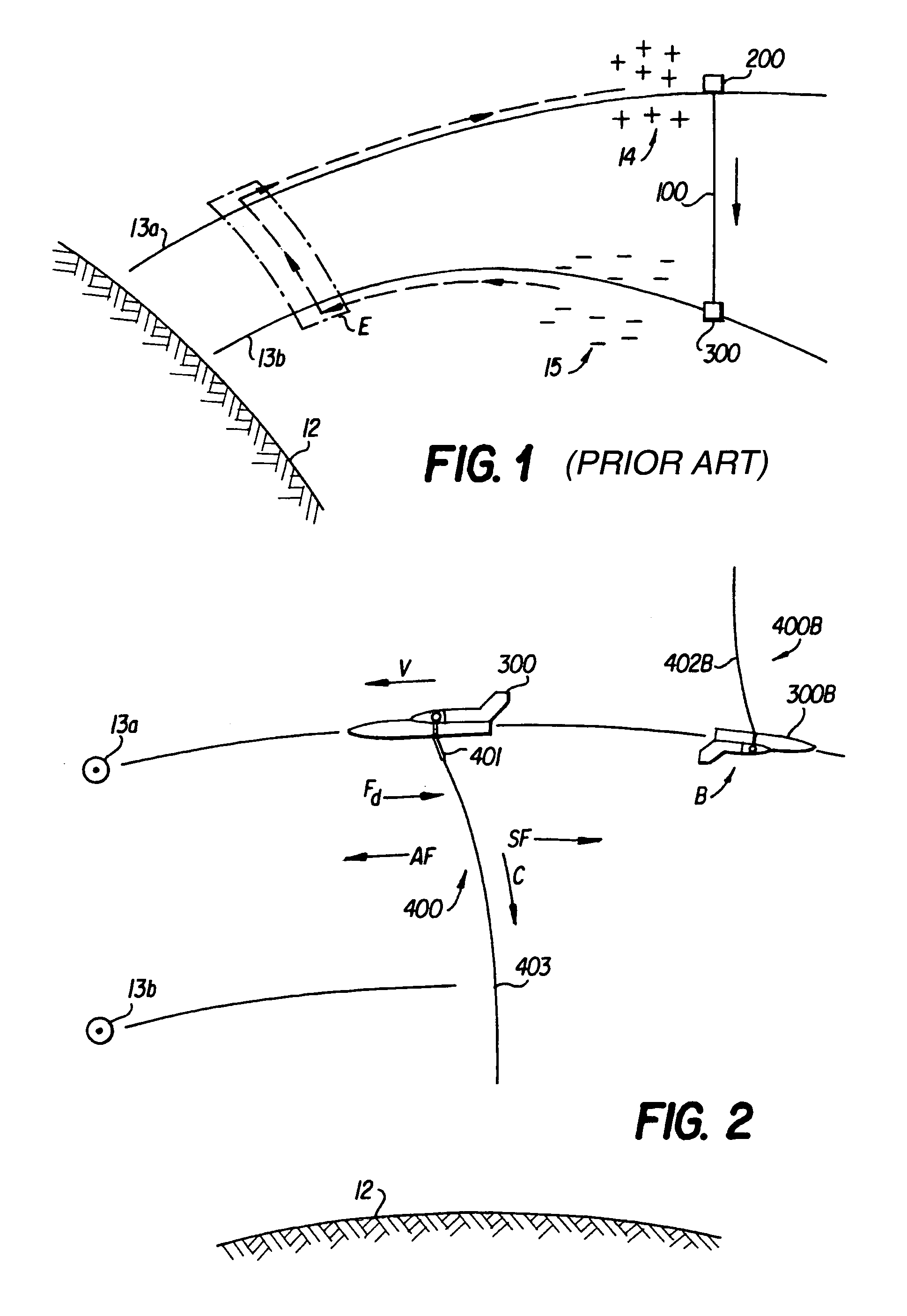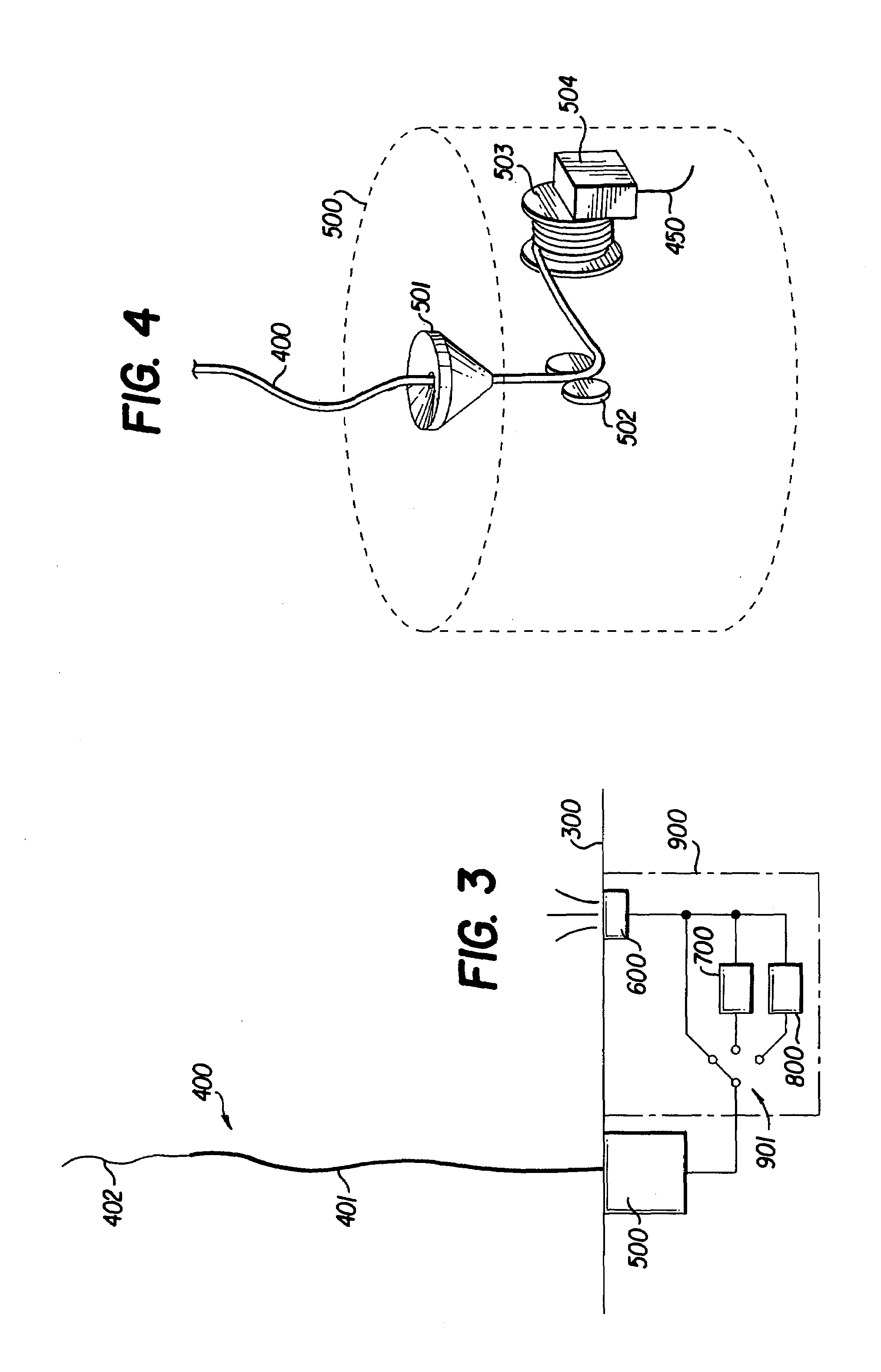Electrodynamic tether
a technology of electrodynamic tethers and tethers, applied in the direction of cosmonautic power supply systems, cosmonautic components, cosmonautic parts, etc., can solve the problems of reducing the effective life of the tether, losing the electrodynamic properties, and bare wire tethers of copper or aluminum, etc., to increase or decrease the orbit of a satellite or power subsystem.
- Summary
- Abstract
- Description
- Claims
- Application Information
AI Technical Summary
Benefits of technology
Problems solved by technology
Method used
Image
Examples
Embodiment Construction
[0024]The electro-dynamic tether 400 according to the present invention is shown in FIG. 2. In the figure, a spacecraft 300 is orbiting the Earth 12 in the direction and speed V. A tether 400 is extended down towards the surface of the Earth from spacecraft 300 in order to provide thrust to the spacecraft, power various subsystems or charge batteries. The tether is separated into three sections, an insulating section 401 attached to spacecraft 300, a conducting section 402 attached to the insulating section extending therefrom and a non-conducting 403 section attached to the conducting section and extending therefrom.
[0025]Circle dots 13a and 13b represent the magnetic field lines of the Earth moving out of the page (to the left of the direction of travel V). The horizontal lines extending from the field lines 13a and 13b represent the change in field strength. As is shown in FIG. 2, spacecraft 300 is at a different field strength than the extended portion of conducting section 402....
PUM
 Login to View More
Login to View More Abstract
Description
Claims
Application Information
 Login to View More
Login to View More - R&D Engineer
- R&D Manager
- IP Professional
- Industry Leading Data Capabilities
- Powerful AI technology
- Patent DNA Extraction
Browse by: Latest US Patents, China's latest patents, Technical Efficacy Thesaurus, Application Domain, Technology Topic, Popular Technical Reports.
© 2024 PatSnap. All rights reserved.Legal|Privacy policy|Modern Slavery Act Transparency Statement|Sitemap|About US| Contact US: help@patsnap.com










